How-to Guide for Leaders
In Traditional Scouting, the purpose of the Tenderfoot through First Class skills is not to get them "signed off," or to be tested in a Scoutmaster Conference or Board of Review, but to train for the First Class Journey. This Journey (the final First Class requirement) is taken by a Second Class Scout and his buddy (without the supervision of older Scouts or adults).
"Go on foot, with three other Scouts, on a 24-hour journey of at least 14 miles.
| Make all the necessary advance preparations, and organize the packing of food and gear. | |
| In the course of the journey, you must cook your own meals, at least one of which must include meat or a protein substitute. | |
| Find a campsite and camp for the night. | |
| You must carry out any instructions given by the examiner as to things to be observed on route. | |
| Make a log of your journey sufficient to show you have carried out those instructions, and submit it within one week of your return." |
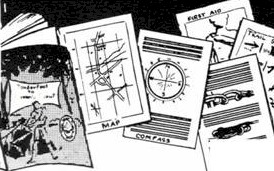
Know Your Tenderfoot through
First Class Scoutcraft
1. The First Class Journey is the culmination of a Scout's progress in the Troop. Those skills and techniques that he has learned in the gradual process of advancement through the grade requirements should be brought into play when he takes the Hike.
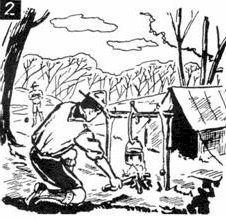
Camping and Cooking
2. The regular Patrol and Troop hikes in which he has taken part; the weekend and long-term camps he has attended all will have contributed to his knowledge of campcraft. Cooking with and without utensils; use of aluminum foil, types of fires and wood, plus the many tips and hints that his Patrol Leader, and you as a Troop Scouter have given him and prepared him for in this phase of his big adventure - The Hike.
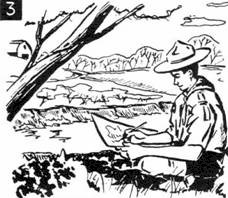
Sketching, Observation, Logs, and Reports
3. Many Scouts make a report and do sketching for the first time on their Hike. This is not fair to the boy. Before his First Class Journey he must be given the opportunity and the encouragement to sketch, make reports and logs of his hikes, overnights, camps and special Troop events.
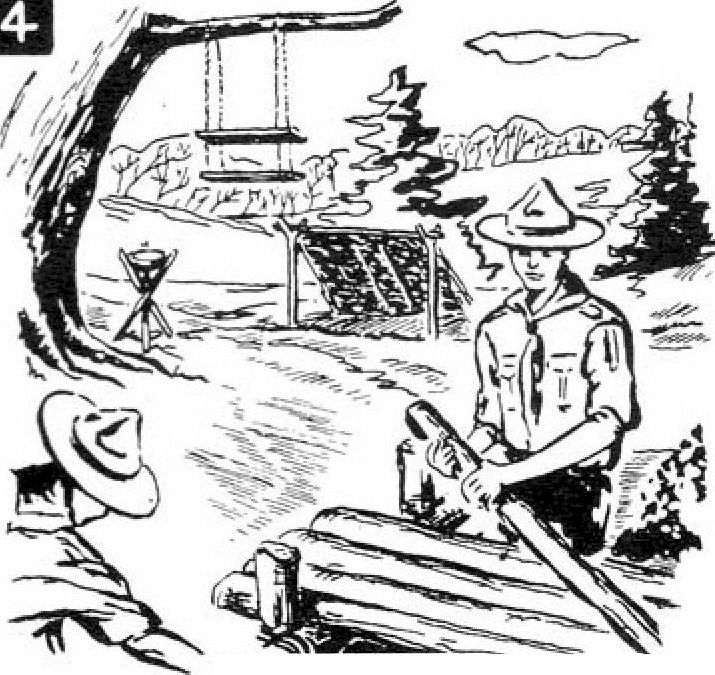
Woodcraft
4. On Patrol and Troop hikes and camps, woodcraft should be taught and developed. Sanitation, gadgets, shelters, knots and lashings, axe and knife - all those skills that will allow the Scout to make himself comfortable safely in a backwoods setting.
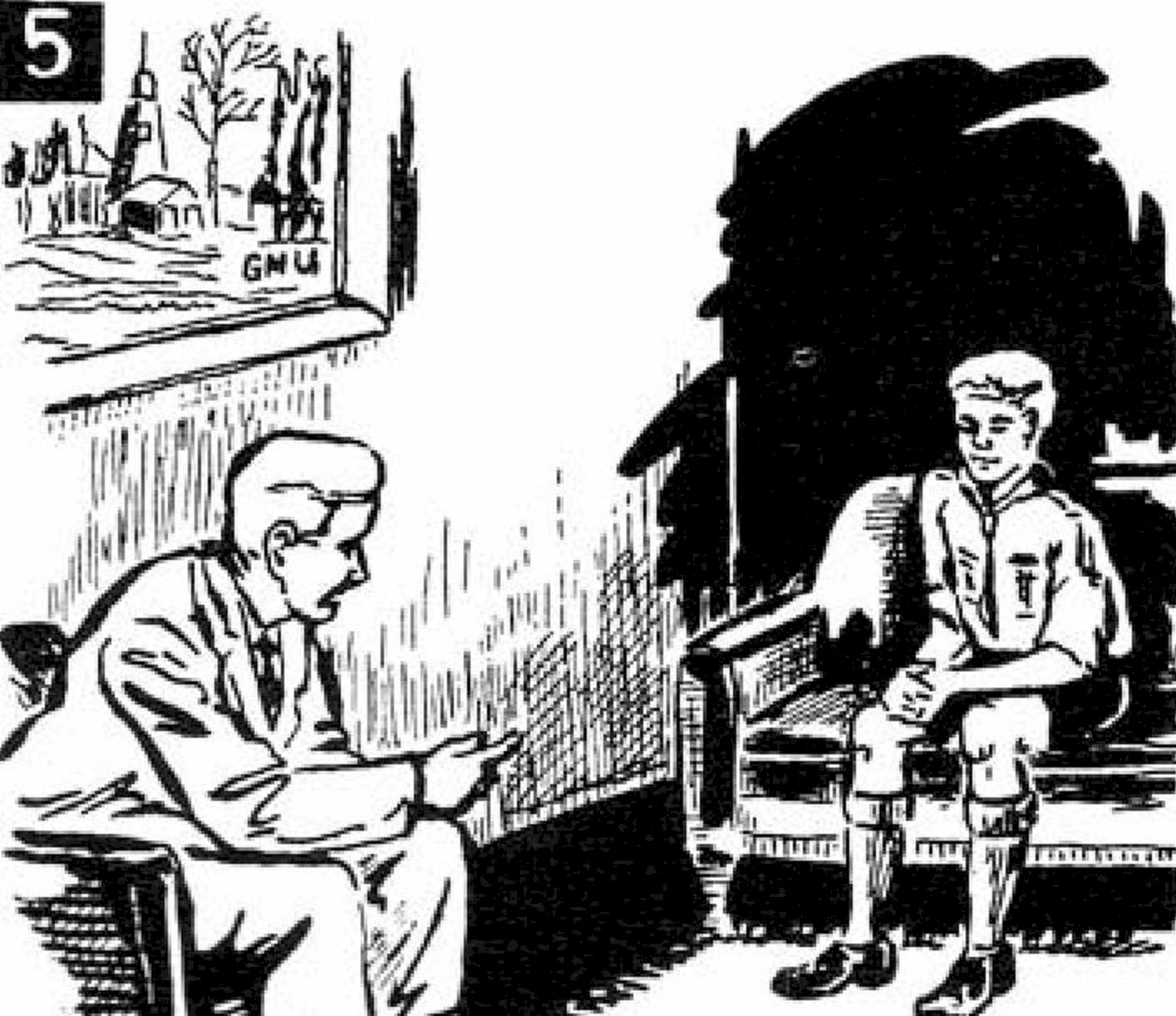
Discussing the First Class Journey
5. The Hike must be discussed between the boy and his Scoutmaster. The boy must know what is expected of him: His Hike Report, his projects, the theme of the hike. The Scoutmaster should ensure himself that the boy is really ready to take his Hike.
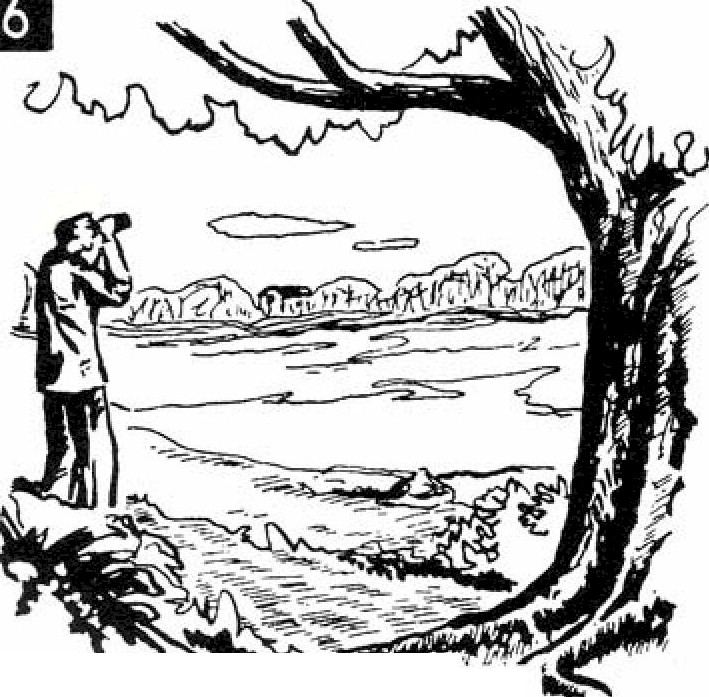
Check the Route
6. Before the Scouts go on their First Class Hike, the Troop Scouters should go over the route themselves. This will ensure that there will be no confusion from the directions or instructions. These days, the face of the land can change rapidly. What may have been open country a few months ago may be a housing development or a super highway today. So check the route personally and layout the course as you go, noting interesting features for project and study.
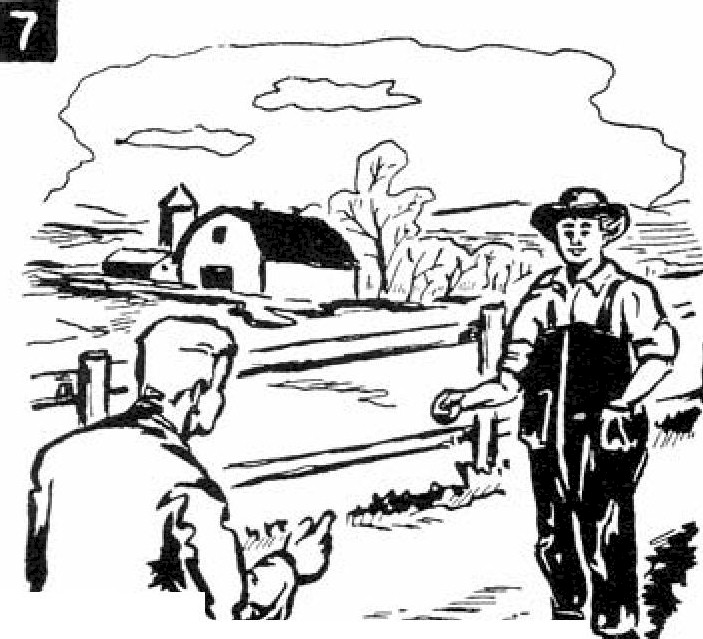
Check with Property Owner
7. At approximately the half-way point in the Hike locate a good camping area and whenever possible contact the owner of the property to secure permission for the Scouts to camp overnight. It is a good idea to explain to the owner the purpose of the Hike so that he will have an understanding of why the boys should camp out and not be offered the facilities of any nearby habitation. Except, of course, in an emergency.
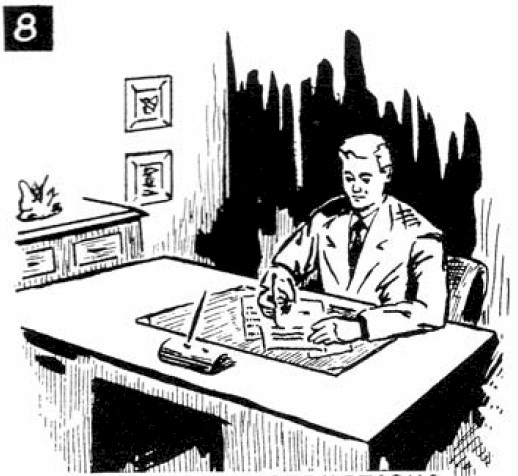
Prepare Instructions, Projects, and Theme
8. After you have checked the route and received permission to camp you can now prepare the Hike instructions. Many Scoutmasters build the First Class Hike around a central theme and tie in projects and instructions with this theme. Conservation, history, waterways, farming, wild-life, nature study, surveys of various kinds are but a few themes that may be used. Instructions must be clear in terminology and typewritten for legibility. They should not be so detailed as to leave nothing to the imagination and initiative of the boys. Use compass bearings, map reference and up-to-date topographical maps. Select projects that will fit into the hike theme. Make the projects worthy of undertaking and the Hike time-schedule should be so organized that they may be completed satisfactorily.
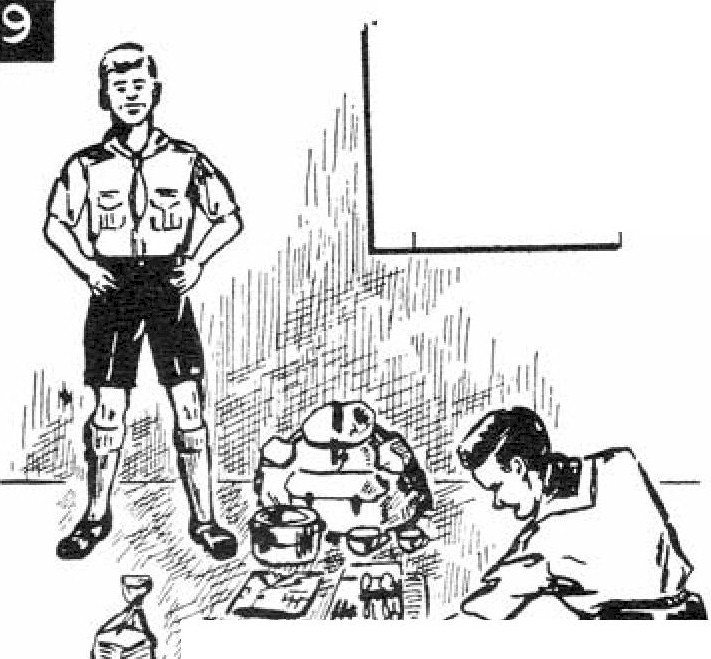
Check and Pack Equipment
9. The Scouts should check over their equipment carefully and pack it properly in a good backpack (with a waist belt). This phase of the Hike reflects on the type of training they have had. The Scouts will make up their own menus, determine the quantities needed and estimate the weight of the food. Before buying the supplies the Troop Scouter should check the menus for variety and content.
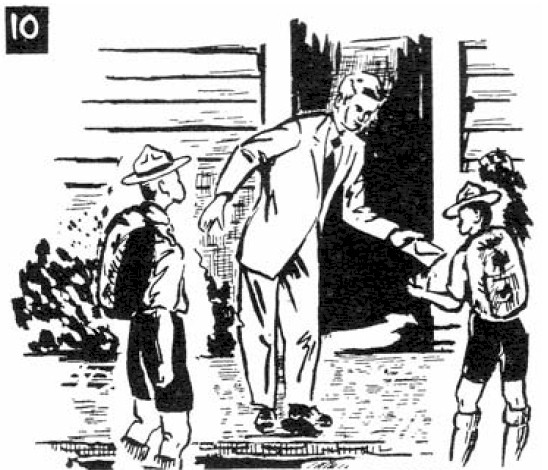
Get Sealed Instructions from Scoutmaster
10. The day prior to leaving for the Hike, sealed instructions are received from the Scoutmaster. On the envelope are directions as to where the instructions are to be opened. The Hike is now underway.
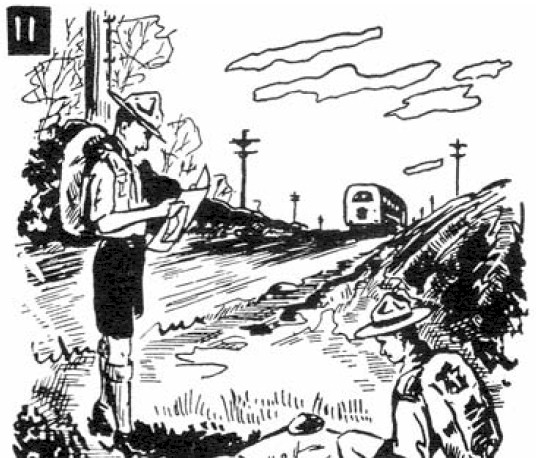
Opening Instructions and Checking Route
11. At the designated spot the instructions are opened and a few moments should be spent plotting their route, checking any map references and planning the best means of arriving at their destinations. Once this has been done the Scouts are on their way to what should be a rewarding and interesting adventure. The Report is started at this point and kept in detail until the end of the Hike.
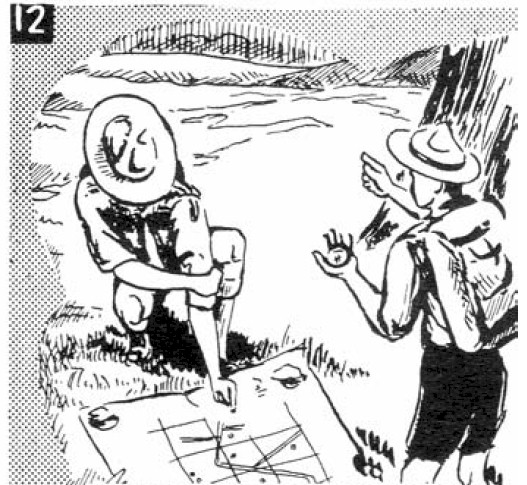
Following
the Course
12. The use of compass, following a course, map reading (symbols, references, scales, etc.) all come into play now as the Scouts progress along the route.
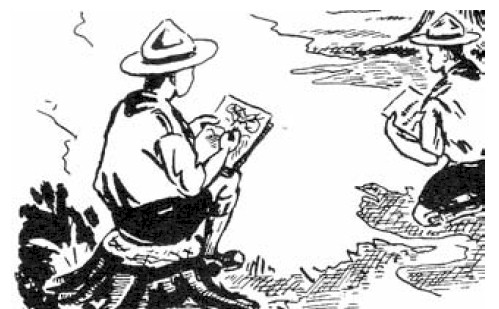
Making
Notes and Sketches
13. Hike Reports and kept up-to-the-minute with notes and sketches made as the Scouts travel the route.
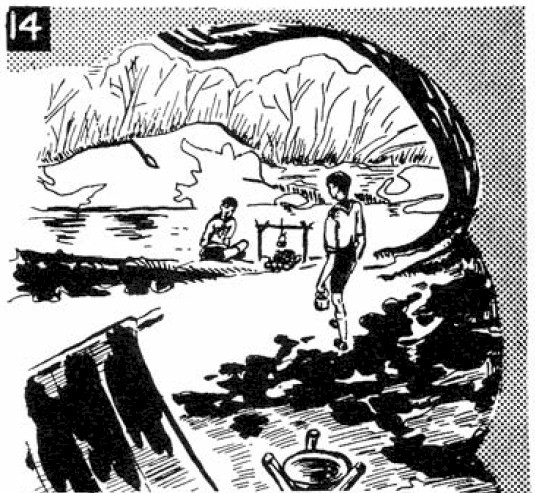
Setup Overnight Camp
14. Arriving at their camping spot the Scouts set up camp, and make the necessary arrangements for a comfortable night. The evening meal is cooked and eaten, the surrounding countryside explored, Hike Reports brought up-to-date, and then to bed.
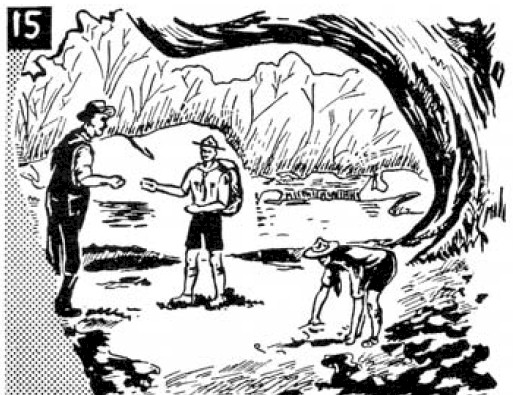
Thanking
Owner & Cleaning Camp
15. The following morning after breakfast, strike camp, clean the grounds, and if possible, thank the owner of the property.
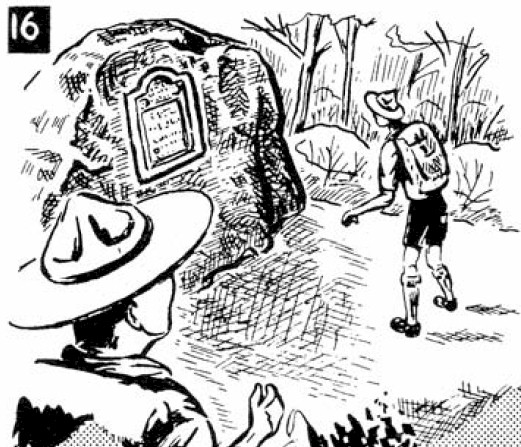
Visiting a Historical Site.
16. The final leg of the Hike is now underway as the Scouts follow the instructions. Perhaps they are to visit a historical site of interest, or survey a town's main business, etc.
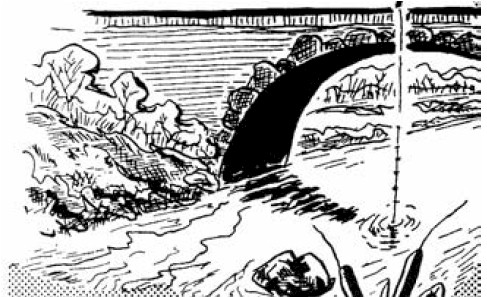
Completing
Journey Projects
17. Complete the projects outlined in the Scoutmaster's sealed instructions: Looking for suitable Patrol camping spots, sounding a river, studying erosion or a specific wildlife habitat: marsh, lake, woods, or field. These projects are many and varied and need only a little imagination to appeal to a boy's sense of adventure.
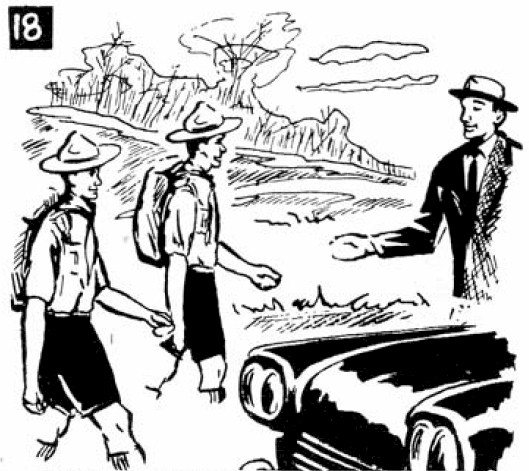
Scouts Meet Scoutmaster and Turn in Report
18. It is a good idea to arrange a rendezvous with the boys for a definite time at a certain map reference. This is not only god training but winds up the Hike neatly. The Hike Reports should be turned in at this time to the Scoutmaster. This should be made clear to the boys before they leave so that their Report will be kept neatly and up-to-date en route.
19. An important phase of the First Class Hike is a review of the Hike as a whole and a review of the Hike Report. This is good training and both the Scouter and the boys can gain a great deal from this experience.
20. If all these points have been covered in logical sequence the First Class Hike cannot help but be a success. The Scouts will have learned a lot and put into practice those skills they have learned during their Troop life, and have had fun and adventure, From the review with them and reading their Reports you will know that your Scouts are First Class in every aspect.
![]()
As we have suggested, the First Class Hike Report should not be the only report a Scout has undertaken prior to his Hike. Much practice is needed before the boy reaches this stage. Begin on day hikes by eliciting observations en route, point out things worth noting. Teach Scouts what to look for and their relative value.
Various specific purposes should be selected for themes of hikes and reports, for example:
The Countryside
| Land Forms | |
| Geology | |
| Conservation | |
| Nature Lore, etc. |
Highways
| Trails and Roads | |
| Turnpikes, Bridges | |
| Modern Transport | |
| Waterways, Canals |
Man and his Work
| Agriculture | |
| Village and Town Surveying | |
| Industry, Architecture | |
| Folk Lore & Crafts |
Things of the Past
| Prehistoric | |
| Indian Burial Grounds | |
| Historic Sites | |
| Churches, etc. |
In the early stages of training only part of one of the above should be selected; later others may be added. A lot depends on the age and education of the Scouts.
Always have a brief written account of what has been done and seen in note form en route. Make this part of Patrol Competitions and assemble the reports for Patrol or Troop logs.
The First Class Hike Report should be the culmination of much previous training. Remember that in the course of a 14 mile hike, with camping, plus reporting, sketching and projects detailed observation is impossible.
The Report should show the spirit of adventure which is much more important than formality. Education and maturity of your Scouts should be taken consideration in reviewing the results.
There is no official form of report but the following suggestions do make for clearness and simplicity:
Use a good grade paper, bound in a hard-back loose leaf cover. Set up your first page showing:
| To whom the report is being made. | |
| From the person making the report. | |
| Subject of the Report. | |
| Dates commenced and completed. | |
| Location-of start, camping spot and finish | |
| Weather-General description at start and progress throughout. Temperature, barometer reading, cloud cover, visibility, humidity may be added. | |
| Map Used-Giving sheet number and scale. |
Rule off, in advance, the left hand pages to show date, times of observations and other activities. Leave the largest space for notes and then a column for miles covered. The right hand page can be used for sketches and maps.
| Train the Scouts to be concise and exact in their Reports. | |
| All names should be printed in capitals for accuracy. | |
| Leave extra space on the paper for additions. | |
| Re-read upon completion to check for any omissions. | |
| Select only facts. |
What kind of things may be expected in the report column? This is the general report apart from an, special bias that the writer may have.
1. A clear account of the route travelled with references to the map used may be expected. Where there is likely to be any confusion in following the route, awkward cross-roads, or paths not too clearly marked, care should be taken to get the directions clear; a sketch of a land mark or a small map will help.
2. Some idea of the type of country travelled through should be given; the natural features should be mentioned, kinds of crops, nature of woods, open spaces, streams, lakes, canals, bridges, roads.
3. An interest in the human and natural life of the district should be shown whether it is largely industrial or agricultural; what kinds of houses there are to give an idea of the well-being of the people; whether there are any local crafts carried on; animal and bird life.
4. The writer should show his interest in man's structures, his churches, ruins, country houses, mills, and any other historical features of interest.
An intelligent Scout should, after his training up to the time when he is fit to take his First Class Hike, be able to note such matters as are mentioned above.
This all implies previous training; this has been constantly mentioned, but it is worth underlining the need for preparing the Scout by short hikes with the Scouter, by short journeys on his own or with a pal, and by practice in reporting. We have been too apt to expect a Scout to write intuitively a good journey report, and when he has naturally failed, except in a few cases, we have blamed the requirement!
Here, as in all Scout requirements, effort made should count before all else, bearing in mind that this requirement is the final one for First Class grade. However as B-P once wrote: "A Scout is not a Scout until he is a First Class Scout."
Thus real and adventurous Scouting starts at this point where the Scout has received sufficient training to undertake adventures further afield, to get to know all he can about his surrounding district from his own observations, from talks with people he meets, and from maps, museums, books, papers and all the innumerable sources of information that are open to him.
See Also:
More Hikes
Baden-Powell's Boy Scout Program
Required Journeys and Expeditions
Outdoor Adventure